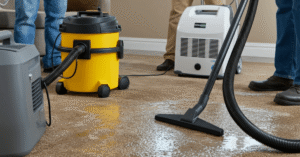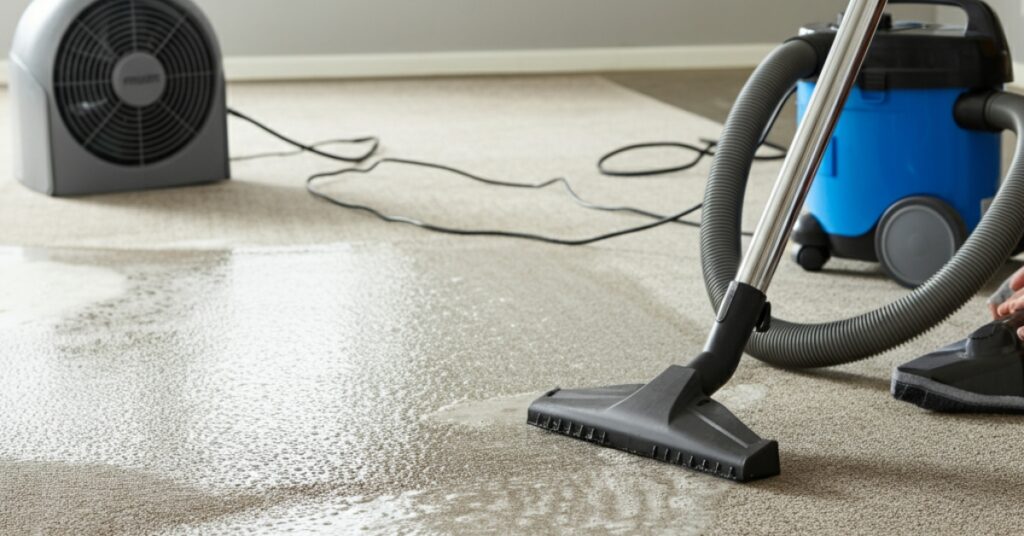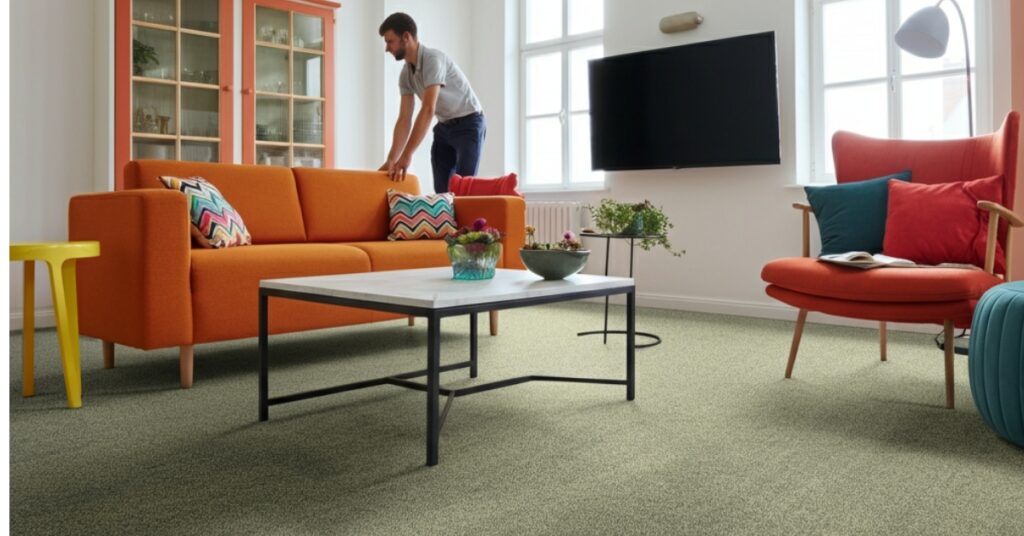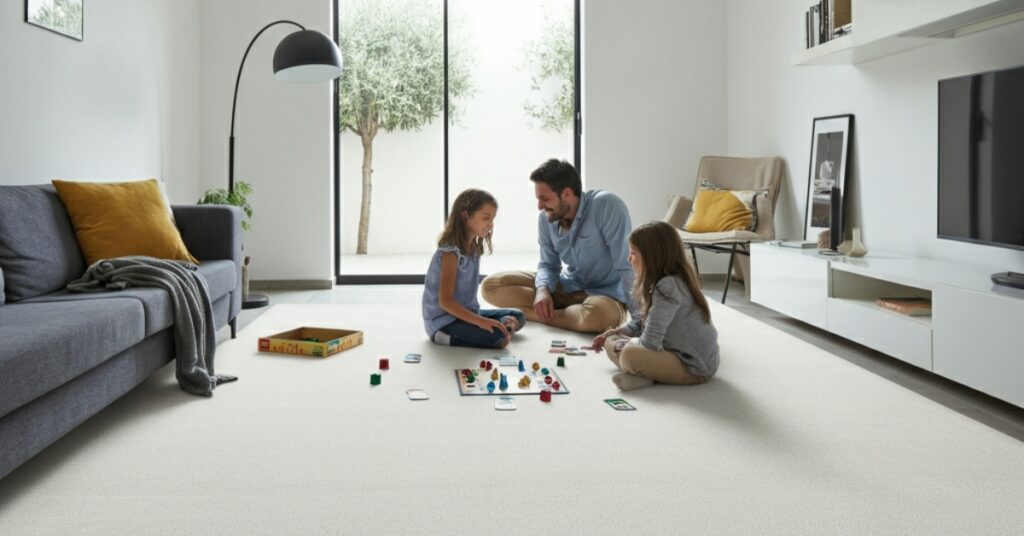As an Amazon Associate, I earn from qualifying purchases.
Finding unexpected spots on your carpet can be unsettling. You might wonder if it’s just a simple stain or something more serious. A common concern for many homeowners is figuring out what mold on carpet looks like, as it can be tricky to distinguish from everyday dirt or spills. Mold is more than just an eyesore; it can also affect your home’s air quality and potentially cause health issues.
Understanding how to identify carpet mold is the first step toward addressing the problem. Mold presents itself in various colors and textures, often accompanied by a distinct smell. Knowing these signs helps you act quickly to protect both your carpet and your family’s well-being. This guide provides clear, detailed information to help you recognize the different appearances of mold on carpeting, understand its causes, and learn the appropriate steps for removal.
Identifying Mold on Your Carpet
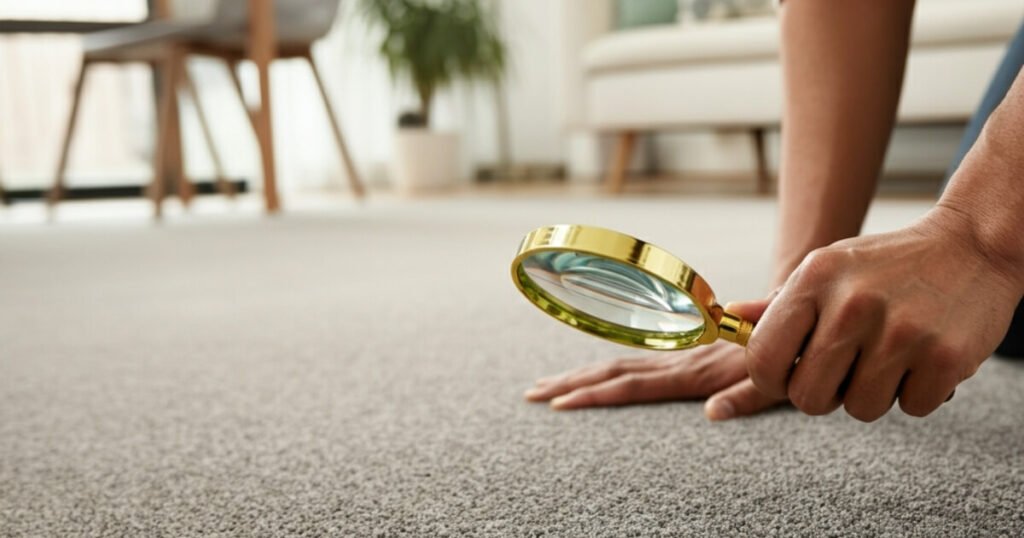
Distinguishing mold from a simple stain is crucial. While a spilled drink might leave a dark spot, mold growth has unique characteristics. It often appears as patches of discoloration that can be green, black, white, or even blue. Unlike a stain, which is typically flat, mold can have a fuzzy or slimy texture. Another key indicator is a persistent musty or earthy smell that doesn’t go away with regular carpet cleaning. This odor is caused by microbial volatile organic compounds (MVOCs), which are gases released by the mold.
Furthermore, if the discolored area grows larger over time, it’s a strong sign that you’re dealing with mold. Stains don’t spread on their own, but mold will continue to expand as long as it has a source of moisture and organic material to feed on. Pay close attention to areas that may have been exposed to water, such as near leaky pipes, windows, or in basements. Checking these high-risk zones can help you catch mold growth early.
Understanding What Causes Mold on Carpet
Mold needs three key things to grow: moisture, a food source, and the right temperature. Your carpet, unfortunately, can provide the perfect environment. The fibers of the carpet act as a food source, and typical indoor temperatures are ideal for mold proliferation. However, moisture is the most critical factor. Without it, mold spores, which are always present in the air, cannot begin to grow and multiply.
Common sources of moisture that lead to carpet mold include plumbing leaks, roof leaks, high humidity, flooding, or even simple spills that weren’t dried properly. When water soaks into the carpet and its padding, it creates a damp environment that is perfect for mold. This is especially true for the carpet padding, which can stay wet for a long time without you realizing it, allowing mold to grow undetected from underneath.
Common Types of Mold Found on Carpeting
Several types of mold can grow on carpets, and they each have distinct visual characteristics. Knowing these can help you better understand what you might be dealing with.
What Does Aspergillus Mold on Carpet Look Like?
Aspergillus is a very common indoor mold. On carpets, it often appears in patches that can be gray, brown, yellow, green, or white. It has a powdery texture and can spread quickly, often looking like a layer of dust at first. It can be found in homes with moderate water damage or high humidity. While it is common, it can cause allergic reactions in sensitive individuals.
What Does Penicillium Mold on Carpet Look like?
Penicillium is another frequent visitor in homes. It is recognizable by its blue or green color and a velvety, fuzzy texture. This is the same mold that grows on spoiled food, like bread or fruit. On carpets, it often indicates the presence of significant moisture. Penicillium can spread rapidly and is known to trigger allergies and asthma symptoms.
What Does Black Mold (Stachybotrys chartarum) on Carpet Look Like?
The term “black mold” often refers to Stachybotrys chartarum, which has a notorious reputation. It is typically slimy and dark greenish-black or black in color. This type of mold requires constant moisture to grow, so it is usually found in areas that have experienced significant water damage, such as from a major flood or a persistent leak. It has a very strong, musty smell.
How to Spot Mold Growing Under Your Carpet
Sometimes, the most significant mold growth happens out of sight. Mold can thrive on the carpet backing or in the padding underneath, where it’s dark and moisture can remain trapped for long periods. Detecting this hidden mold requires a bit more investigation.
Look for Physical Signs on the Carpet Surface
Even when mold is growing underneath, it can sometimes produce visible signs on the surface. You might notice unexplained discoloration or staining that appears without a known spill. The carpet might also feel damp or spongy in certain spots, even if the surface appears dry. In some cases, the carpet might start to separate from the floor as the backing deteriorates due to mold growth.
Use Your Sense of Smell
One of the most reliable indicators of hidden mold is a persistent musty odor. If you notice a damp, earthy smell in a room that you can’t trace to any other source, there’s a good chance mold is growing somewhere nearby. The smell is often strongest in the area where the mold is located. Getting down on your hands and knees and smelling the carpet in different spots can help you pinpoint the source.
Inspect the Carpet Padding and Backing
If you strongly suspect mold is growing underneath your carpet, you may need to pull back a corner to inspect the padding and the subfloor. Use pliers to gently lift the carpet in an inconspicuous area, like inside a closet or behind a large piece of furniture. Look for black, green, or white discoloration on the carpet backing or the padding. The subfloor itself might also show signs of water damage or mold growth.
Steps for Safely Removing Mold From Carpet
If you’ve discovered a small area of mold (less than 10 square feet), you may be able to handle the cleanup yourself. For larger infestations, it’s always best to call a professional.
1. Ensure Proper Ventilation and Safety
Before you start, open windows and doors to ventilate the area. Wear protective gear, including an N-95 mask, gloves, and safety goggles, to avoid inhaling mold spores or getting them on your skin.
2. Deep Clean and Dry the Affected Area
For surface mold, you can often use a mixture of vinegar and water or a specialized carpet cleaning solution designed to kill mold. Apply the solution to the affected area and scrub gently with a brush. Be careful not to oversaturate the carpet. After cleaning, use a wet-dry vacuum to extract as much moisture as possible, then use fans or a dehumidifier to dry the area completely.
For more information you can read our guideline on: How to Get Mold Out of Carpet?
3. When to Dispose of the Carpet
If mold has penetrated deep into the carpet padding or covers a large area, it’s usually impossible to remove it completely. In these cases, the safest and most effective solution is to remove and replace the affected section of the carpet and padding. The contaminated materials should be sealed in heavy-duty plastic bags before being disposed of to prevent the spread of spores.
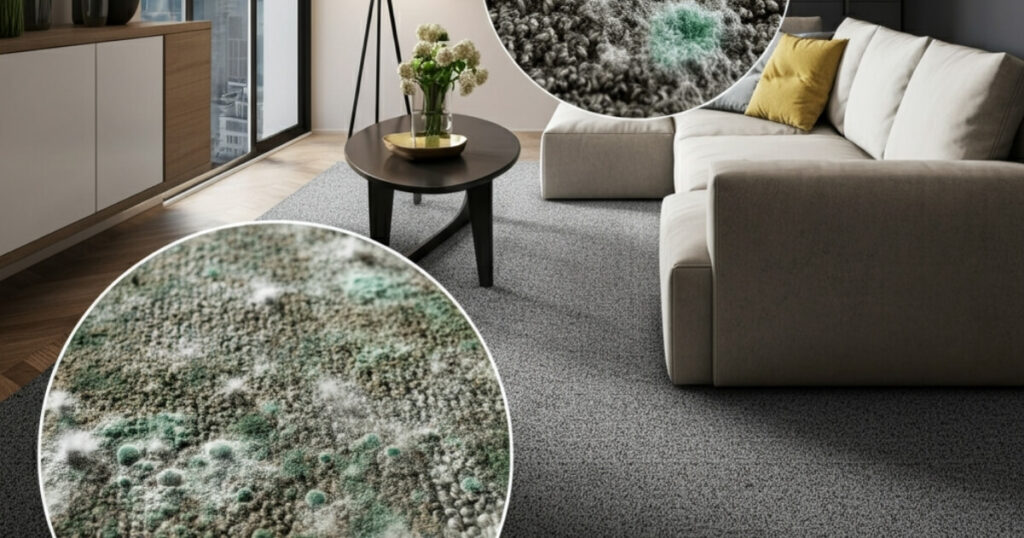
Your Questions About Carpet Mold Answered
1. Can mold on a carpet make you sick?
Yes, mold on a carpet can potentially make you sick. Mold releases spores into the air that can trigger allergic reactions, asthma attacks, and other respiratory issues in sensitive individuals. Symptoms can include sneezing, coughing, itchy eyes, and skin rashes.
2. What kills mold on carpet?
A solution of equal parts white vinegar and water is a natural and effective way to kill mold on carpets. There are also commercial carpet cleaners specifically formulated to kill mold and mildew. Bleach is generally not recommended for carpets as it can discolor the fibers.
3. Is white mold on carpet dangerous?
Yes, any color of mold on a carpet can be potentially harmful. White mold is often a type of mold in its early stages of growth and can still cause allergic reactions and respiratory problems, just like black or green mold.
4. How do you know if there is mold under your carpet?
A persistent musty or earthy smell is the most common sign of mold under a carpet. You might also notice unexplained stains on the carpet surface, or the carpet may feel damp. The surest way to know is to pull back a corner of the carpet and inspect the padding and subfloor for discoloration.
5. How quickly does mold grow on a wet carpet?
Mold can begin to grow on a wet carpet in as little as 24 to 48 hours, especially if the conditions are warm and humid. This is why it is so important to dry any spills or water damage as quickly and thoroughly as possible.
Protecting Your Home from Future Mold Growth
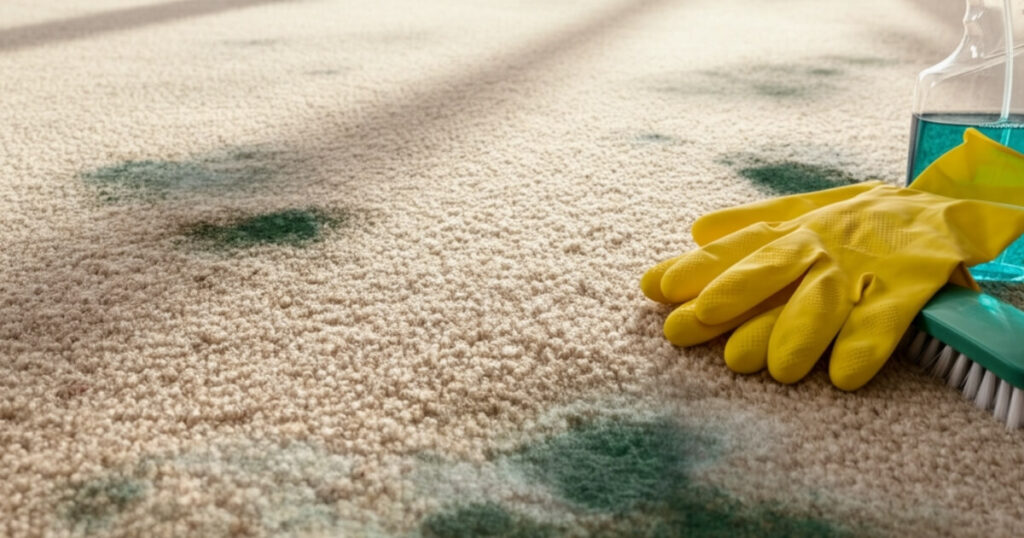
Preventing mold is always easier than removing it. The key to prevention is moisture control. Regularly inspect your home for any signs of leaks in your plumbing, roof, or around windows, and repair them promptly. Use dehumidifiers in damp areas like basements and ensure your home is well-ventilated. When spills happen, clean them up immediately and dry the area completely. Regular vacuuming and professional carpet cleaning can also help remove mold spores before they have a chance to grow. By being proactive, you can keep your carpets clean and your home healthy.
As an Amazon Associate, I earn from qualifying purchases.

